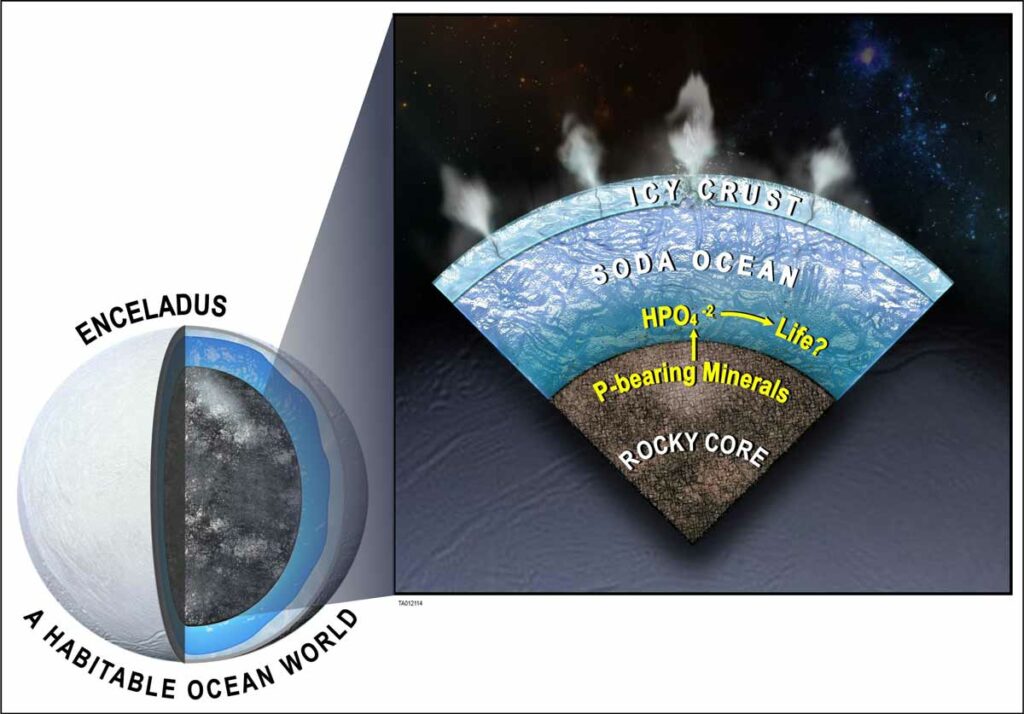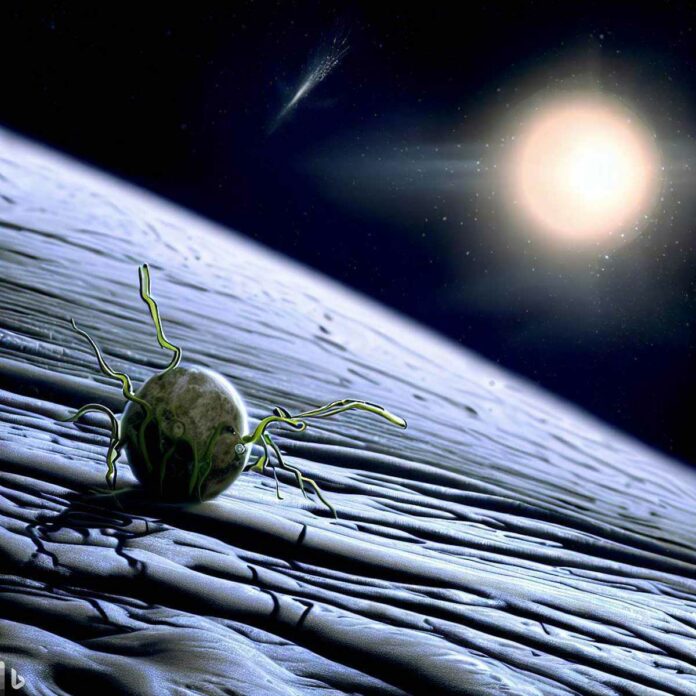In a groundbreaking discovery, scientists have unearthed evidence that could have profound implications for the existence of extraterrestrial life within our solar system. Dr. Christopher Glein, a renowned expert in extraterrestrial oceanography from the Southwest Research Institute, and his team have detected phosphorus—a crucial building block for life—in the subsurface ocean of Saturn’s moon, Enceladus. The findings, based on data collected during NASA’s Cassini mission, have ignited excitement among researchers and further strengthened the case for the potential habitability of other celestial bodies.
Enceladus, a moon shrouded in mystery, has long captivated the scientific community. The Cassini spacecraft, which tirelessly explored the Saturn system for over 13 years, discovered the presence of liquid water beneath Enceladus’ icy surface. This groundbreaking revelation set the stage for the latest breakthrough, as the team analyzed plumes of ice grains and gases erupting from cracks on the moon’s surface and detected the presence of phosphates, a form of phosphorus. This discovery marks a significant milestone in our understanding of the moon’s composition and its potential to support life.
“Back in 2020, our geochemical modeling already hinted at the abundance of phosphorus in Enceladus’ ocean,” explained Dr. Glein. He co-authored a paper published in the prestigious journal Nature, which detailed the team’s research. “Now, we have concrete evidence of abundant phosphorus in the plume ice samples originating from the subsurface ocean.”
Phosphorus, in the form of phosphates, plays a vital role in the development of life on Earth. It is an essential component of DNA and RNA, the molecules that store and transmit genetic information. Phosphates also contribute to the energy-carrying mechanisms within cells, form the building blocks of cell membranes, and are crucial for the structure of bones and teeth in living organisms. Additionally, the sea’s delicate balance of life, including the thriving microbiome of plankton, relies on phosphates. Without this fundamental element, life as we know it would cease to exist.
What makes this discovery even more remarkable is the concentration of phosphates found on Enceladus. Dr. Glein revealed, “We found phosphate concentrations at least 100 times higher in the moon’s plume-forming ocean waters than in Earth’s oceans.” This revelation highlights the moon’s potential as a haven for life beyond our home planet. By surpassing the strictest requirement for life—a sufficient supply of phosphates—Enceladus has become an even more promising candidate in the search for extraterrestrial organisms.

The Significance of Ocean Worlds and Enceladus’ Role
Over the past quarter-century, planetary science has witnessed a series of profound discoveries. Among them is the realization that ocean worlds, characterized by subsurface oceans beneath icy exteriors, are abundant within our solar system. These worlds include the likes of Europa, Titan, and, of course, Enceladus. In contrast to Earth, which relies on surface oceans for its habitability, these interior ocean worlds possess a broader range of potential habitable zones. This expanded range significantly increases the number of potentially life-supporting worlds throughout the galaxy.
Dr. Glein explained, “Through geochemical experiments and modeling, it has been determined that the elevated levels of phosphates are attributed to increased solubility of phosphate minerals, not only in Enceladus but also in other icy oceanic worlds within our solar system, extending beyond Jupiter.” This revelation suggests that the presence of phosphates might not be limited to Enceladus alone, further bolstering the case for habitability across various celestial bodies.
With the tantalizing presence of phosphates in Enceladus’ subsurface ocean, the next logical step for researchers is to ascertain whether this habitable environment hosts actual life forms. Dr. Glein emphasized the importance of future exploration, stating, “We need to go back to Enceladus and investigate if this habitable ocean is indeed inhabited.” The implications of such a discovery would revolutionize our understanding of the universe and the potential prevalence of life throughout the cosmos.
As scientists continue to unlock the secrets of our solar system, Enceladus stands as a beacon of hope—a celestial body that tantalizes us with its potential for harboring life. The discovery of phosphorus in its subsurface ocean fuels our curiosity and ignites a renewed determination to explore the mysteries of our cosmic neighborhood. Perhaps, within the icy depths of Enceladus, lies the key to unraveling the enigma of extraterrestrial life.
More information: Frank Postberg, Detection of phosphates originating from Enceladus's ocean, Nature (2023). DOI: 10.1038/s41586-023-05987-9. www.nature.com/articles/s41586-023-05987-9

